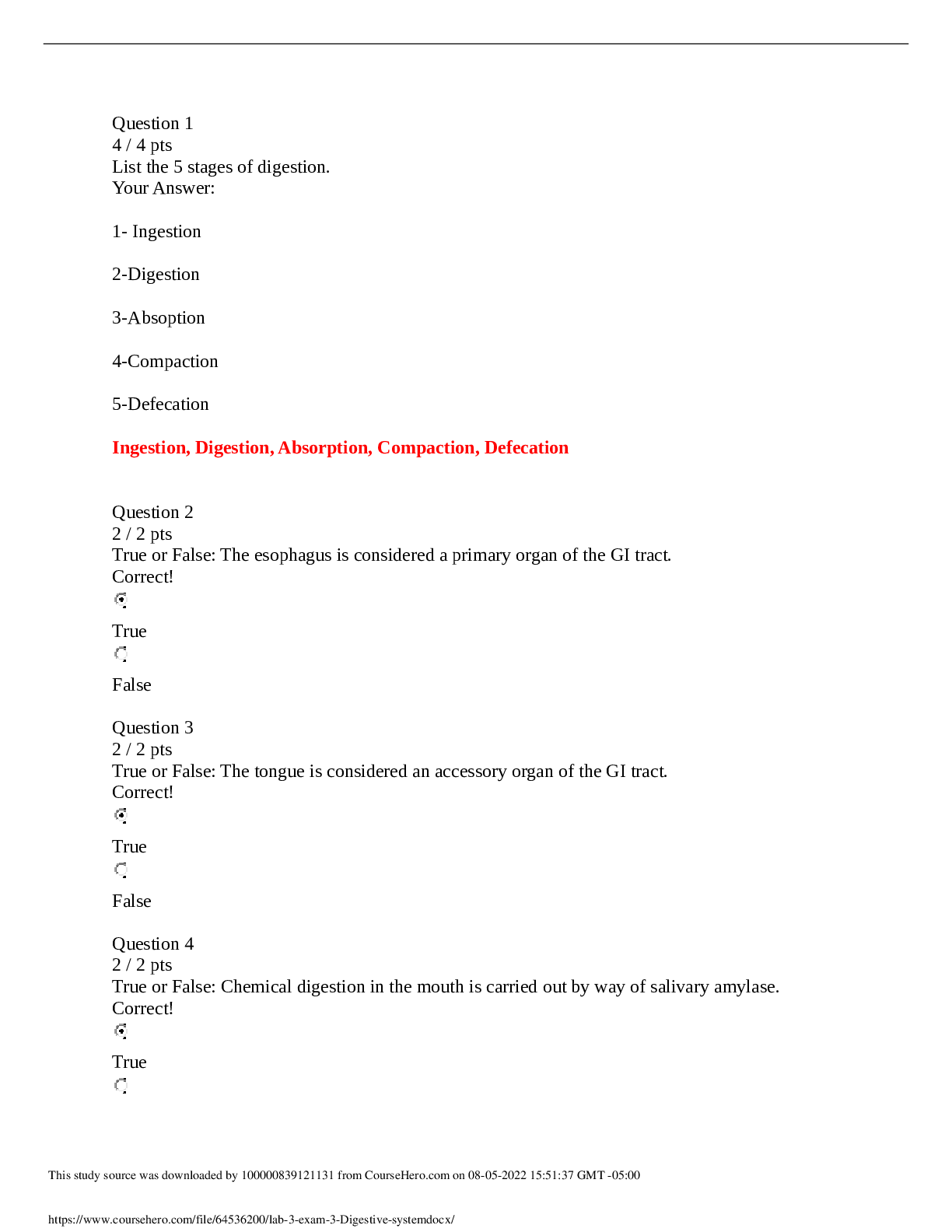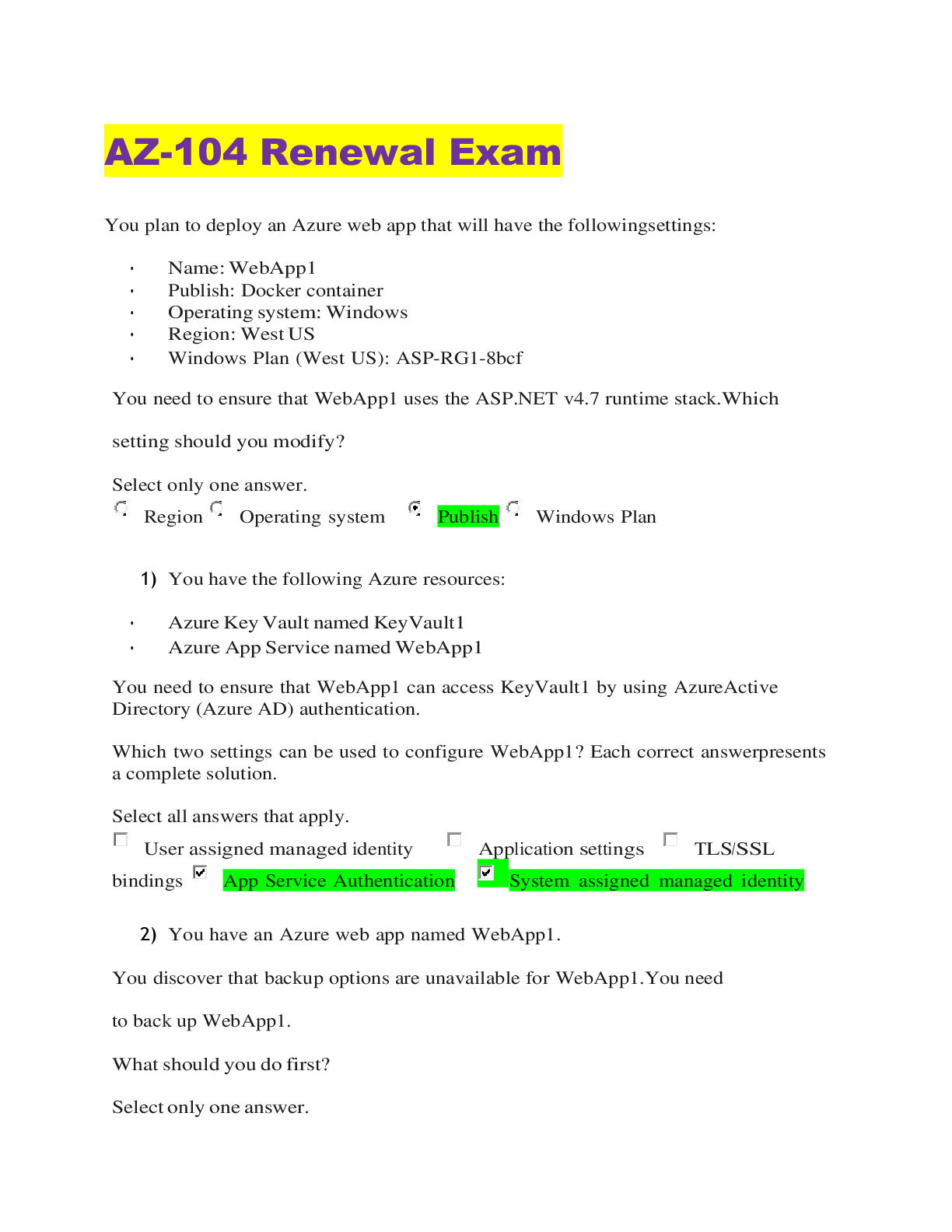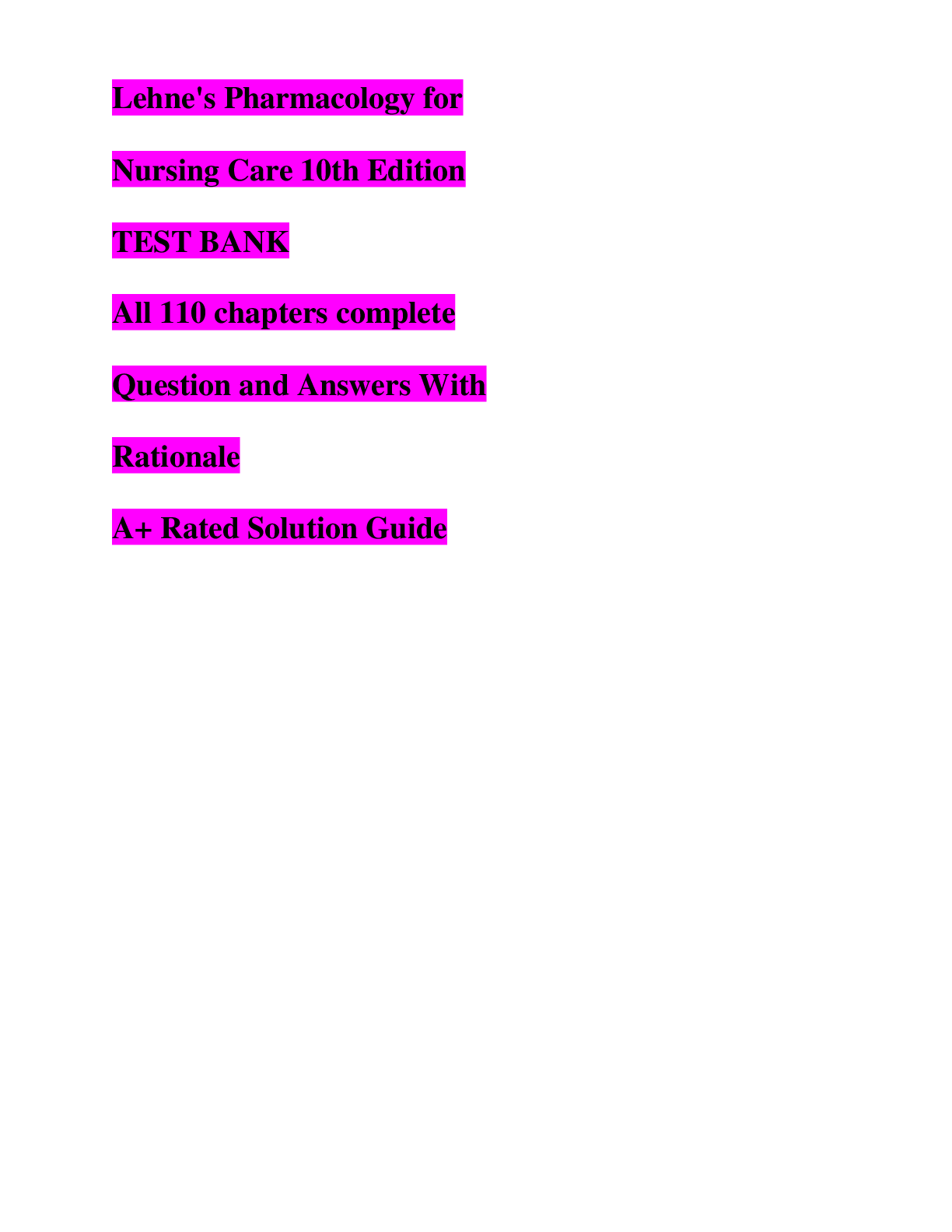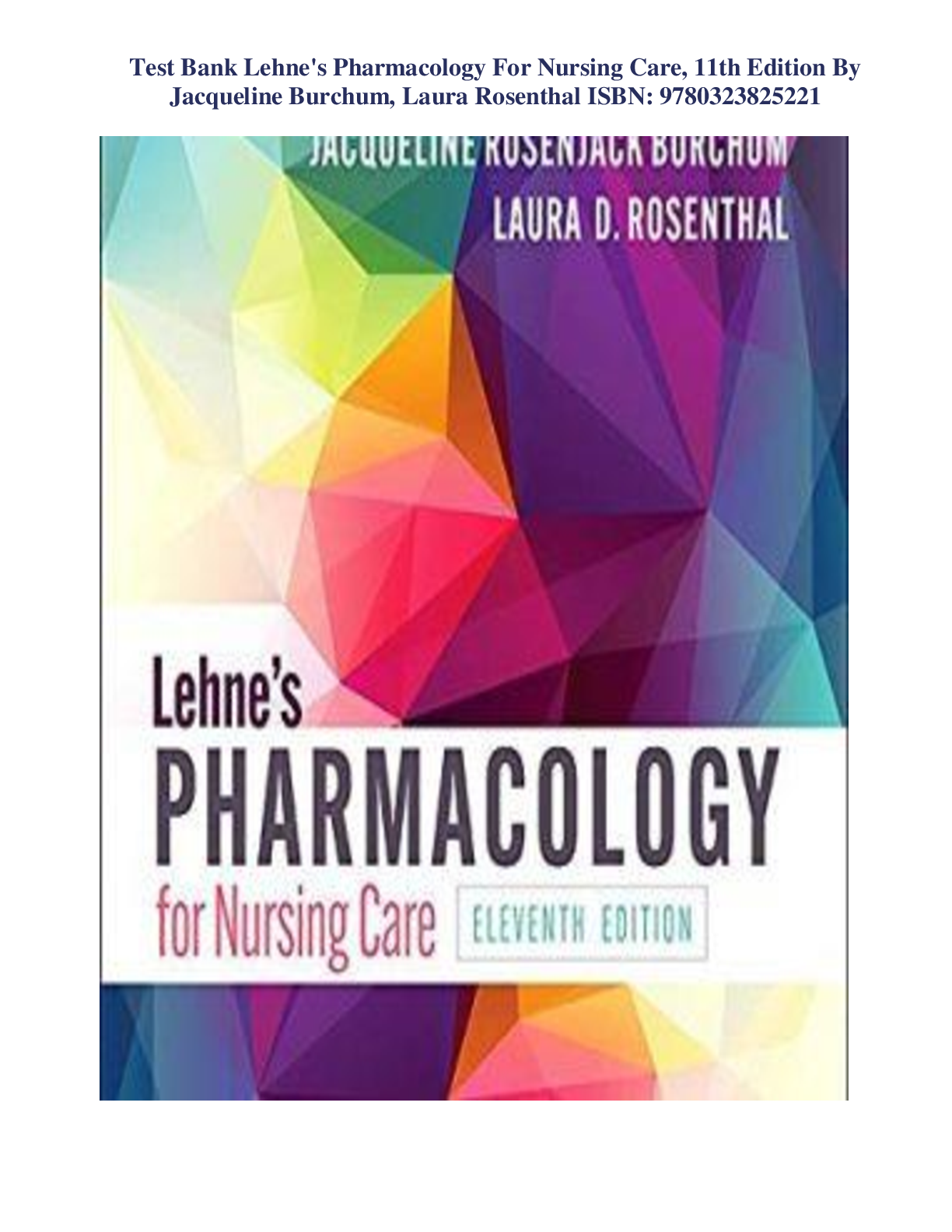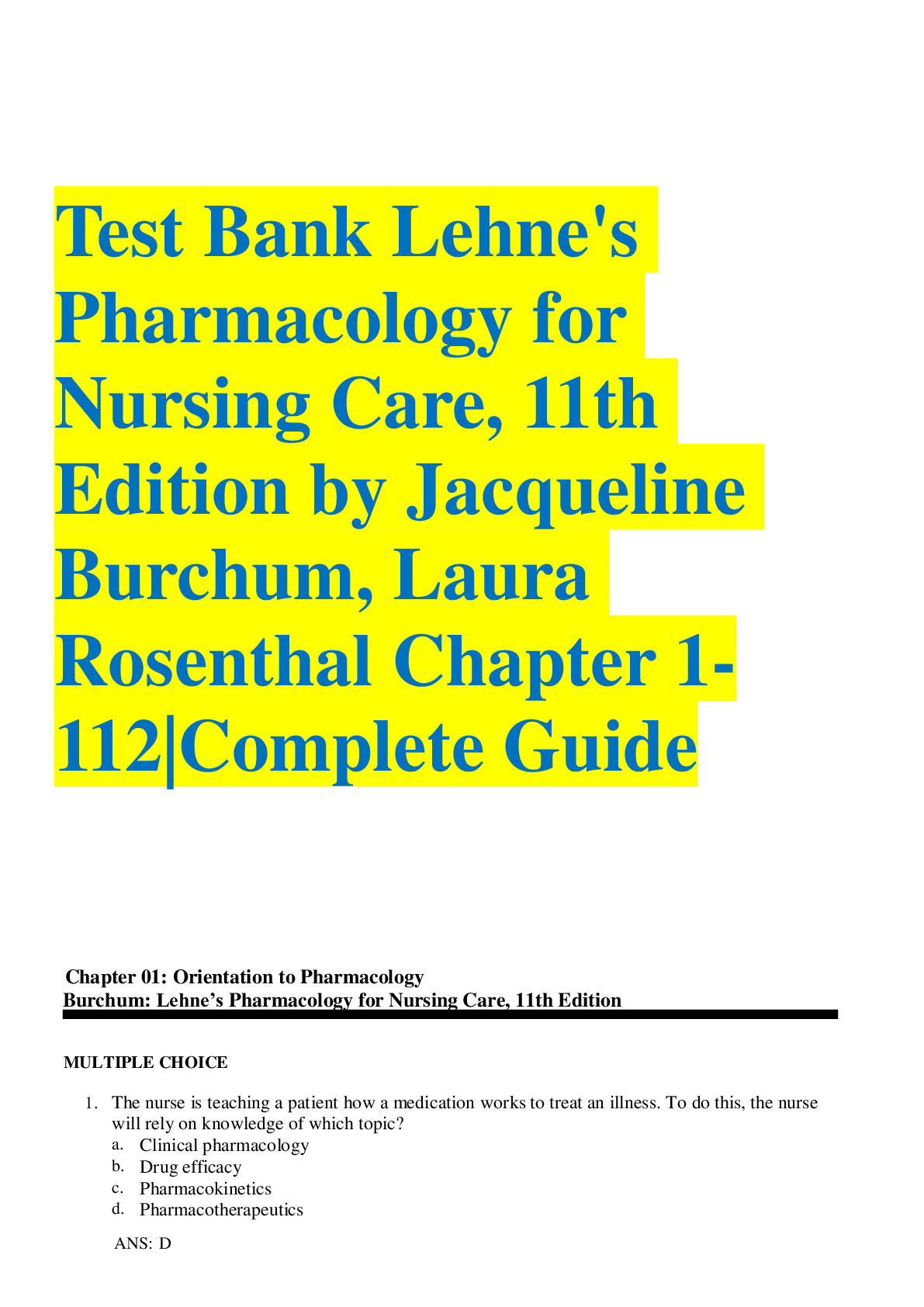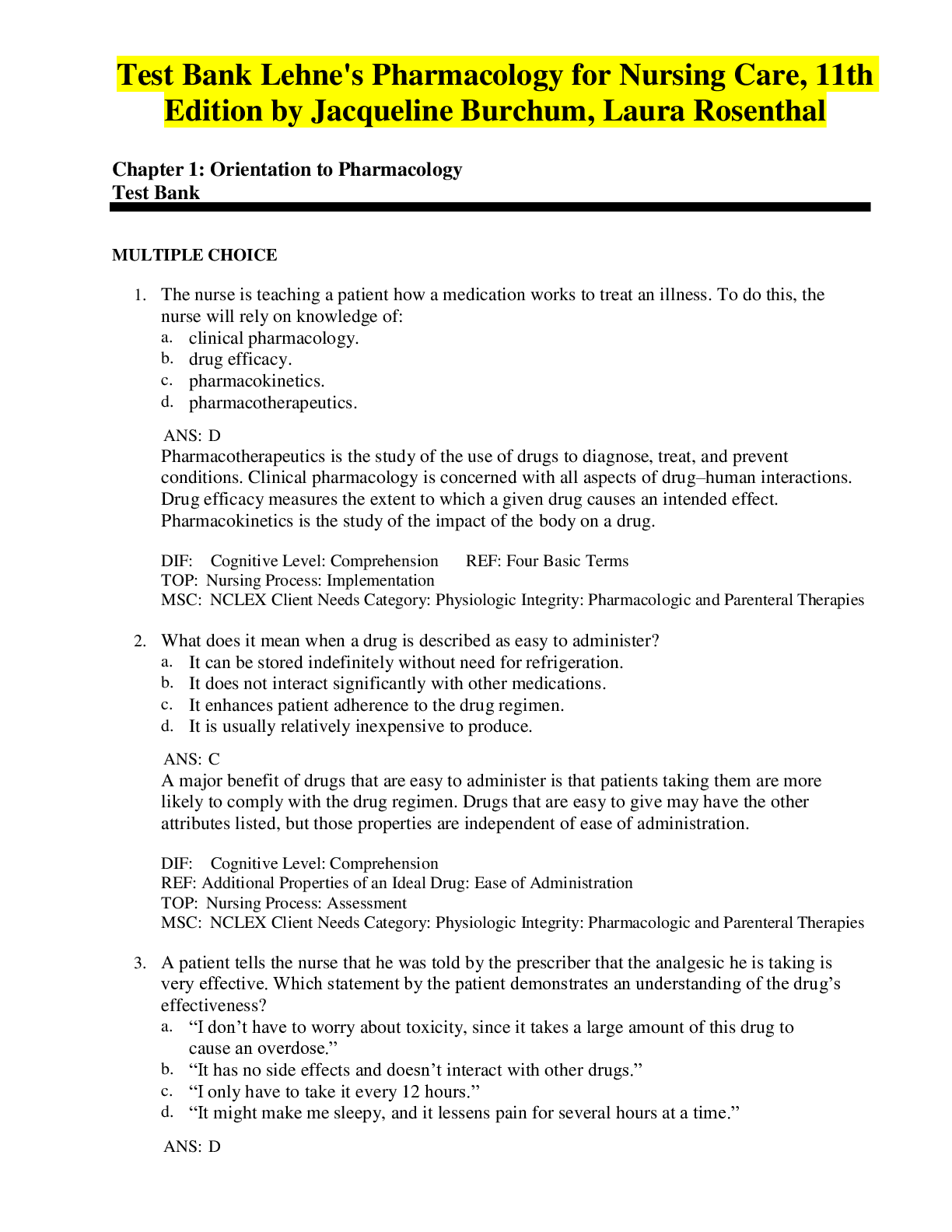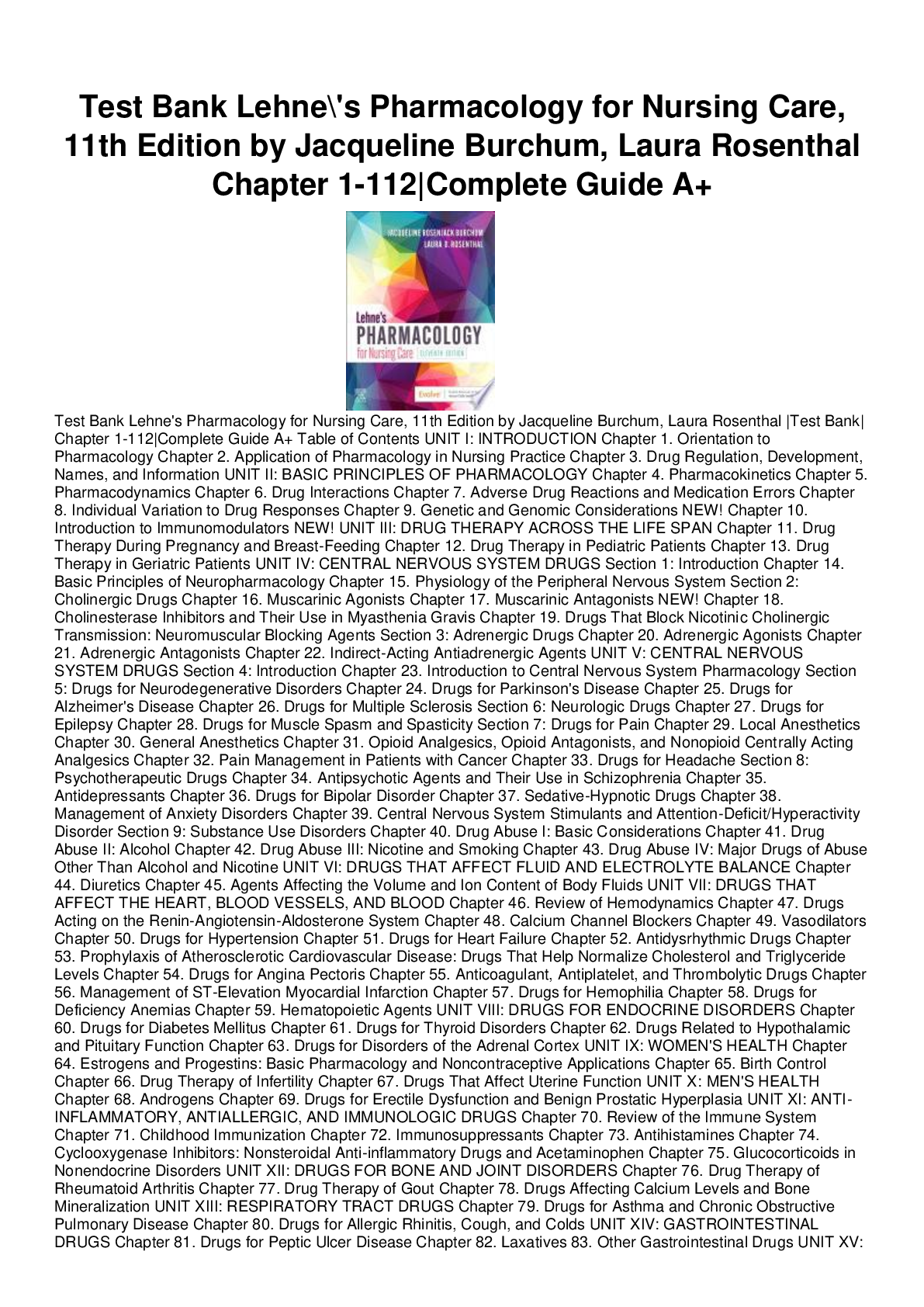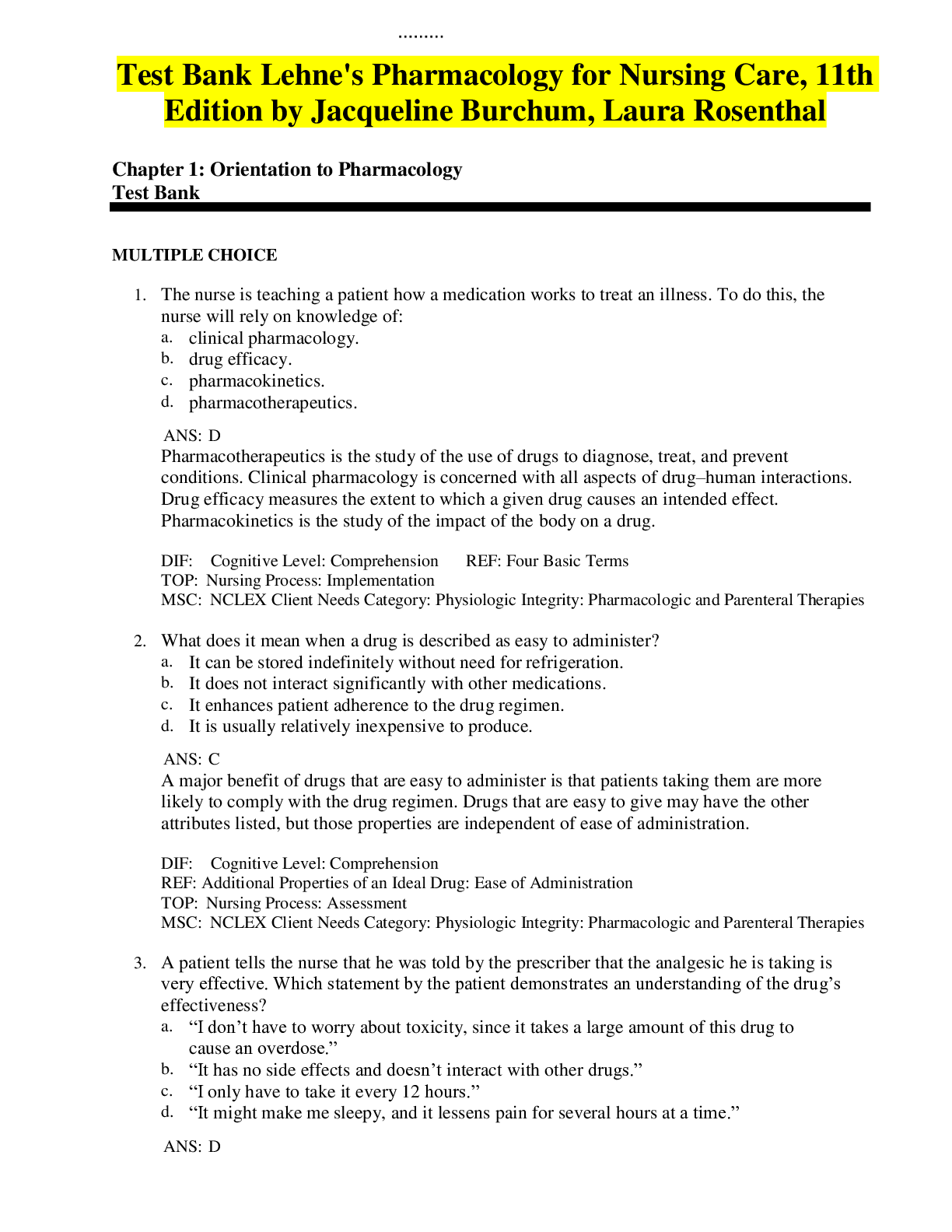Health Care > EXAM > Test Bank Lehne's Pharmacology for Nursing Care,11th Ed by Jacqueline Burchum, Laura Rosenthal (All)
Test Bank Lehne's Pharmacology for Nursing Care,11th Ed by Jacqueline Burchum, Laura Rosenthal
Document Content and Description Below
Test Bank Lehne's Pharmacology for Nursing Care,11th Ed by Jacqueline Burchum, Laura Rosenthal Chapter 1: Orientation to Pharmacology Test Bank MULTIPLE CHOICE 1. The nurse is teaching ... a patient how a medication works to treat an illness. To do this, the nurse will rely on knowledge of: a. clinical pharmacology. b. drug efficacy. c. pharmacokinetics. d. pharmacotherapeutics. ANS: D Pharmacotherapeutics is the study of the use of drugs to diagnose, treat, and prevent conditions. Clinical pharmacology is concerned with all aspects of drug–human interactions. Drug efficacy measures the extent to which a given drug causes an intended effect. Pharmacokinetics is the study of the impact of the body on a drug. DIF: Cognitive Level: Comprehension REF: Four Basic Terms TOP: Nursing Process: Implementation MSC: NCLEX Client Needs Category: Physiologic Integrity: Pharmacologic and Parenteral Therapies 2. What does it mean when a drug is described as easy to administer? a. It can be stored indefinitely without need for refrigeration. b. It does not interact significantly with other medications. c. It enhances patient adherence to the drug regimen. d. It is usually relatively inexpensive to produce. ANS: C A major benefit of drugs that are easy to administer is that patients taking them are more likely to comply with the drug regimen. Drugs that are easy to give may have the other attributes listed, but those properties are independent of ease of administration. DIF: Cognitive Level: Comprehension REF: Additional Properties of an Ideal Drug: Ease of Administration TOP: Nursing Process: Assessment MSC: NCLEX Client Needs Category: Physiologic Integrity: Pharmacologic and Parenteral Therapies 3. A patient tells the nurse that he was told by the prescriber that the analgesic he is taking is very effective. Which statement by the patient demonstrates an understanding of the drug’s effectiveness? a. “I don’t have to worry about toxicity, since it takes a large amount of this drug to cause an overdose.” b. “It has no side effects and doesn’t interact with other drugs.” c. “I only have to take it every 12 hours.” d. “It might make me sleepy, and it lessens pain for several hours at a time.” ANS: D A drug is effective if it produces the intended effects, even if it also produces side effects. Because no drug is completely safe, the level of toxicity does not determine effectiveness. All drugs have side effects and many react with other substances; these do not affect the drug’s effectiveness. Ease of administration is independent of a drug’s effectiveness. DIF: Cognitive Level: Comprehension REF: Properties of an Ideal Drug TOP: Nursing Process: Evaluation MSC: NCLEX Client Needs Category: Physiologic Integrity: Pharmacologic and Parenteral Therapies MULTIPLE RESPONSE 1. What are the properties of an ideal drug? (Select all that apply.) a. Irreversible action b. Predictability c. Ease of administration d. Chemical stability e. A simple trade name ANS: B, C, D In addition to predictability, ease of administration, and chemical stability, other properties include a reversible action so that any harm the drug may cause can be undone and a simple generic name, because generic names are usually complex and difficult to remember and pronounce. DIF: Cognitive Level: Comprehension REF: Properties of an Ideal Drug | Additional Properties of an Ideal Drug TOP: Nursing Process: Assessment MSC: NCLEX Client Needs Category: Physiologic Integrity: Pharmacologic and Parenteral Therapies 2. Before administering a medication, what does the nurse need to know to evaluate how individual patient variability might affect the patient’s response to the medication? (Select all that apply.) a. Chemical stability of the medication b. Ease of administration c. Family medical history d. Patient’s age e. Patient’s diagnosis ANS: C, D, E The family medical history can indicate genetic factors that may affect a patient’s response to a medication. Patients of different ages can respond differently to medications. The patient’s illness can affect how drugs are metabolized. The chemical stability of the medication and the ease of administration are properties of drugs. DIF: Cognitive Level: Analysis REF: Sources of Individual Variation TOP: Nursing Process: Implementation MSC: NCLEX Client Needs Category: Physiologic Integrity: Reduction of Risk Potential Chapter 2: Application of Pharmacology in Nursing Practice Test Bank MULTIPLE CHOICE 1. A patient is using a metered-dose inhaler containing albuterol for asthma. The medication label instructs the patient to administer “2 puffs every 4 hours as needed for coughing or wheezing.” The patient reports feeling jittery sometimes when taking the medication, and she doesn’t feel that the medication is always effective. Which is not an appropriate nursing intervention for this patient? a. Asking the patient to demonstrate use of the inhaler b. Assessing the patient’s exposure to tobacco smoke c. Auscultating lung sounds and obtaining vital signs d. Suggesting that the patient use one puff to reduce side effects ANS: D It is not within the nurse’s scope of practice to change the dose of a medication without an order from a prescriber. Asking the patient to demonstrate inhaler use helps the nurse to evaluate the patient’s ability to administer the medication properly and is part of the nurse’s evaluation. Assessing tobacco smoke exposure helps the nurse determine whether nondrug therapies, such a smoke avoidance, can be used as an adjunct to drug therapy. Performing a physical assessment helps the nurse evaluate the patient’s response to the medication. DIF: Cognitive Level: Application REF: Applying the Nursing Process in Drug Therapy: Preadministration Assessment [and all subsections under this heading] TOP: Nursing Process: Implementation MSC: NCLEX Client Needs Category: Physiologic Integrity: Pharmacologic and Parenteral Therapies 2. A postoperative patient is being discharged home with acetaminophen/hydrocodone (Lortab) for pain. The patient asks the nurse about using Tylenol for fever. Which statement by the nurse is correct? a. “It is not safe to take over-the-counter drugs with prescription medications.” b. “Taking the two medications together poses a risk of drug toxicity.” c. “There are no known drug interactions, so this will be safe.” d. “Tylenol and Lortab are different drugs, so there is no risk of overdose.” ANS: B Tylenol is the trade name and acetaminophen is the generic name for the same medication. It is important to teach patients to be aware of the different names for the same drug to minimize the risk of overdose. Over-the-counter (OTC) medications and prescription medications may be taken together unless significant harmful drug interactions are possible. Even though no drug interactions are at play in this case, both drugs contain acetaminophen, which could lead to toxicity. DIF: Cognitive Level: Application REF: Application of Pharmacology in Patient Education: Dosage and Administration TOP: Nursing Process: Implementation MSC: NCLEX Client Needs Category: Physiologic Integrity: Reduction of Risk Potential 3. The nurse is preparing to care for a patient who will be taking an antihypertensive medication. Which action by the nurse is part of the assessment step of the nursing process? a. Asking the prescriber for an order to monitor serum drug levels b. Monitoring the patient for drug interactions after giving the medication c. Questioning the patient about over-the-counter medications d. Taking the patient’s blood pressure throughout the course of treatment ANS: C The assessment part of the nursing process involves gathering information before beginning treatment, and this includes asking about other medications the patient may be taking. Monitoring serum drug levels, watching for drug interactions, and checking vital signs after giving the medication are all part of the evaluation phase. DIF: Cognitive Level: Application REF: Preadministration Assessment TOP: Nursing Process: Assessment MSC: NCLEX Client Needs Category: Physiologic Integrity: Reduction of Risk Potential 4. A postoperative patient reports pain, which the patient rates as an 8 on a scale from 1 to 10 (10 being the most extreme pain). The prescriber has ordered acetaminophen (Tylenol) 650 mg PO every 6 hours PRN pain. What will the nurse do? a. Ask the patient what medications have helped with pain in the past. b. Contact the provider to request a different analgesic medication. c. Give the pain medication and reposition the patient to promote comfort. d. Request an order to administer the medication every 4 hours. ANS: B The nursing diagnosis for this patient is severe pain. Acetaminophen is given for mild to moderate pain, so the nurse should ask the prescriber to order a stronger analgesic medication. Asking the patient to tell the nurse what has helped in the past is a part of an initial assessment and should be done preoperatively and not when the patient is having severe pain. Because the patient is having severe pain, acetaminophen combined with nondrug therapies will not be sufficient. Increasing the frequency of the dose of a medication for mild pain will not be effective. DIF: Cognitive Level: Analysis REF: Analysis and Nursing Diagnosis TOP: Nursing Process: Diagnosis MSC: NCLEX Client Needs Category: Physiologic Integrity: Pharmacologic and Parenteral Therapies 5. A patient newly diagnosed with diabetes is to be discharged from the hospital. The nurse teaching this patient about home management should begin by doing what? a. Asking the patient to demonstrate how to measure and administer insul [Show More]
Last updated: 1 year ago
Preview 1 out of 577 pages
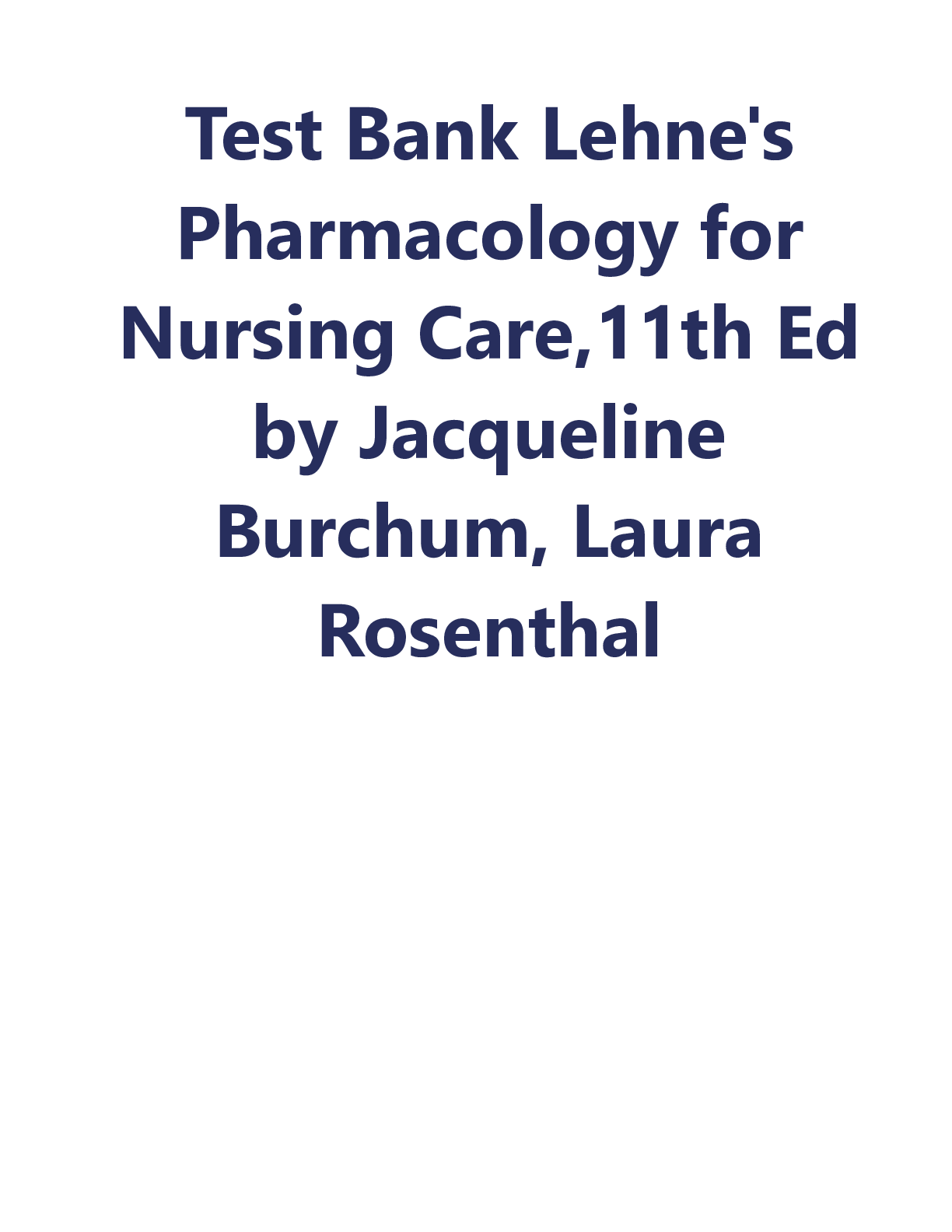
Reviews( 0 )
Document information
Connected school, study & course
About the document
Uploaded On
Sep 07, 2022
Number of pages
577
Written in
Additional information
This document has been written for:
Uploaded
Sep 07, 2022
Downloads
0
Views
68

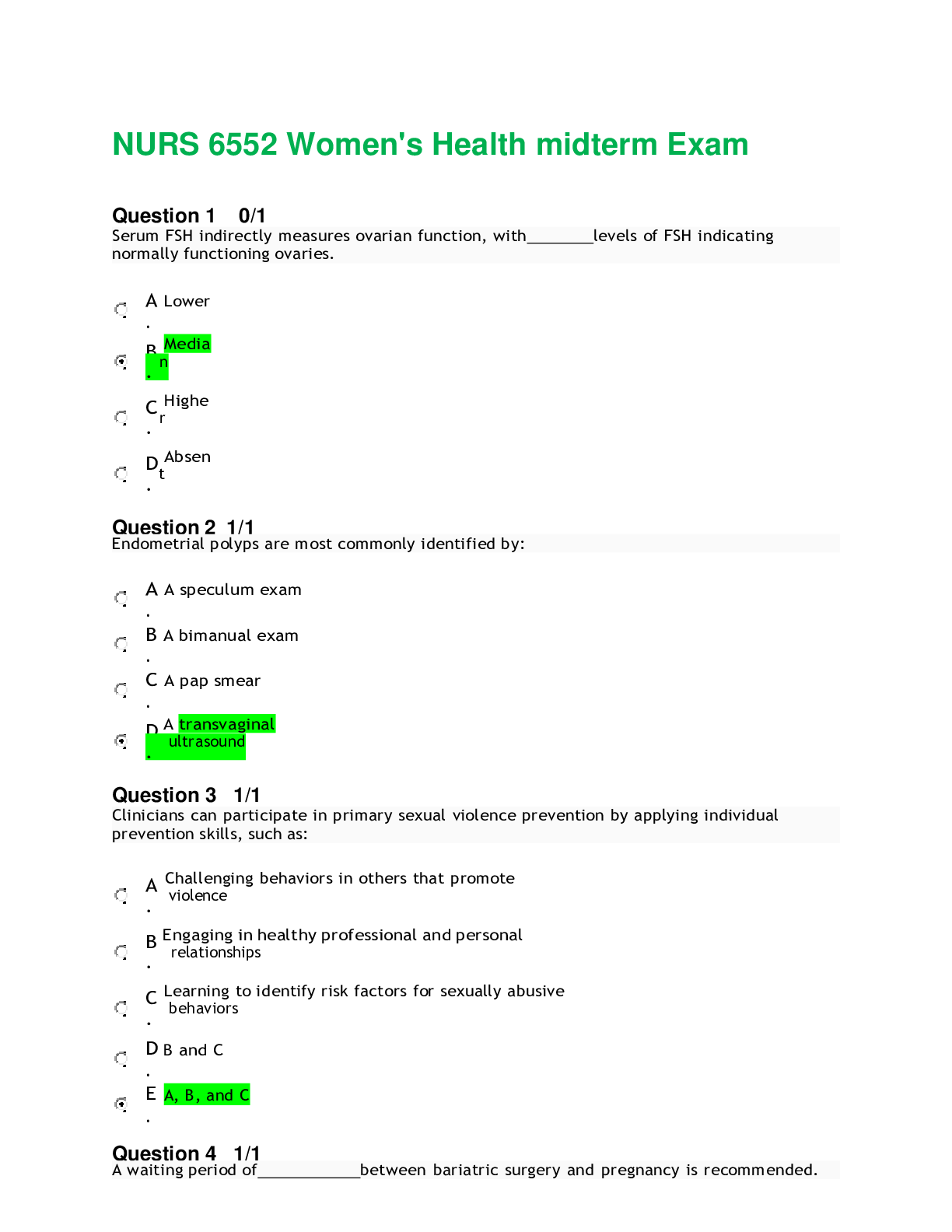
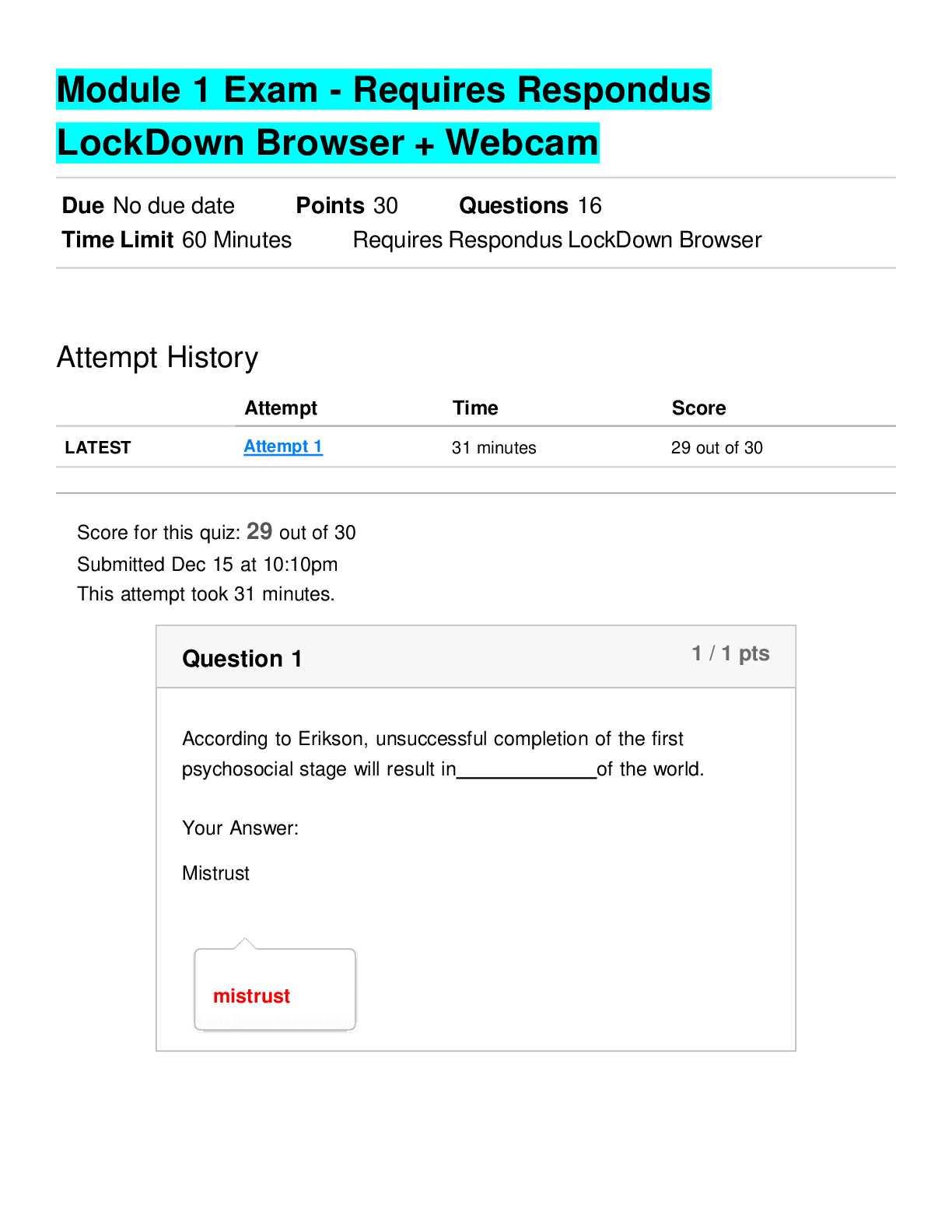
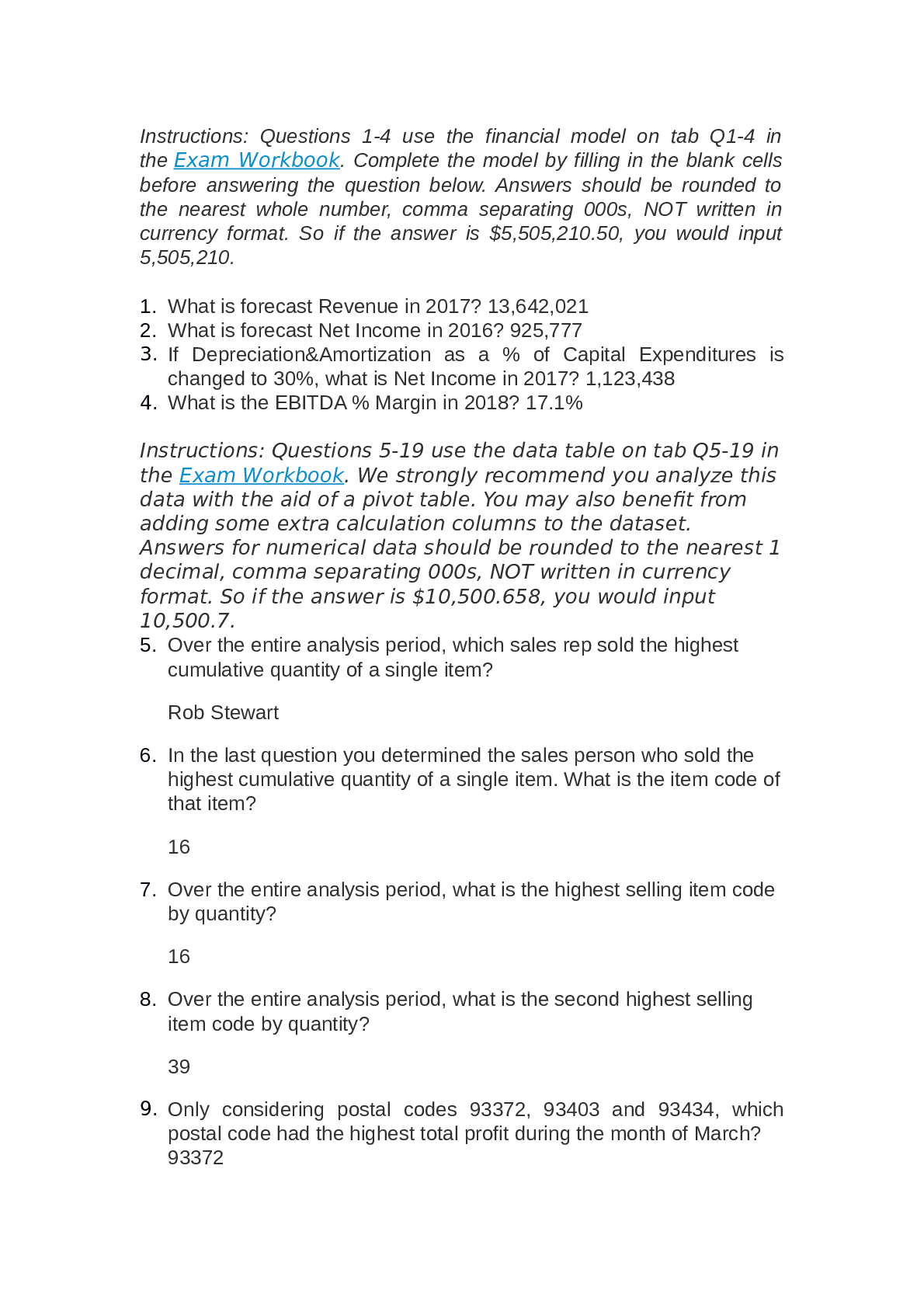
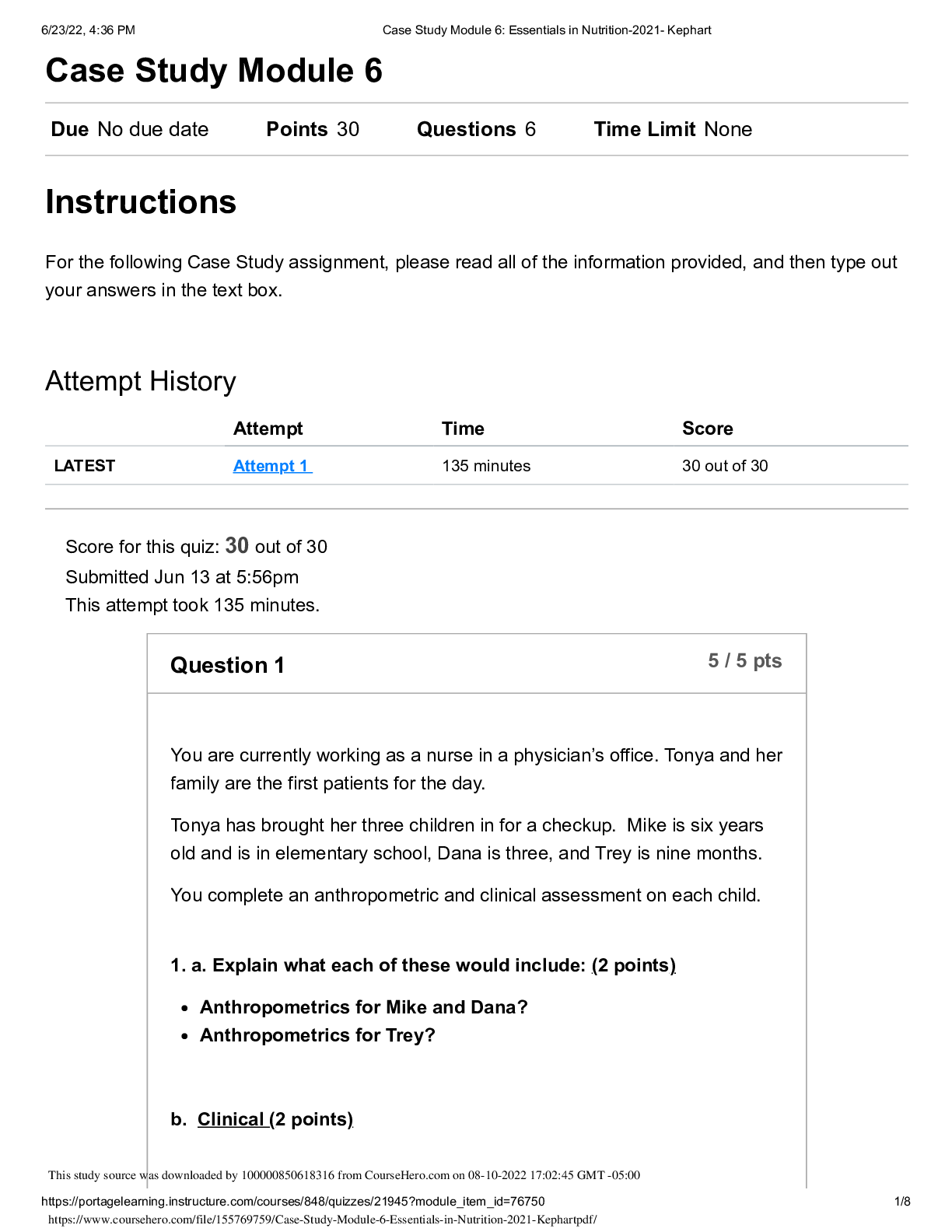

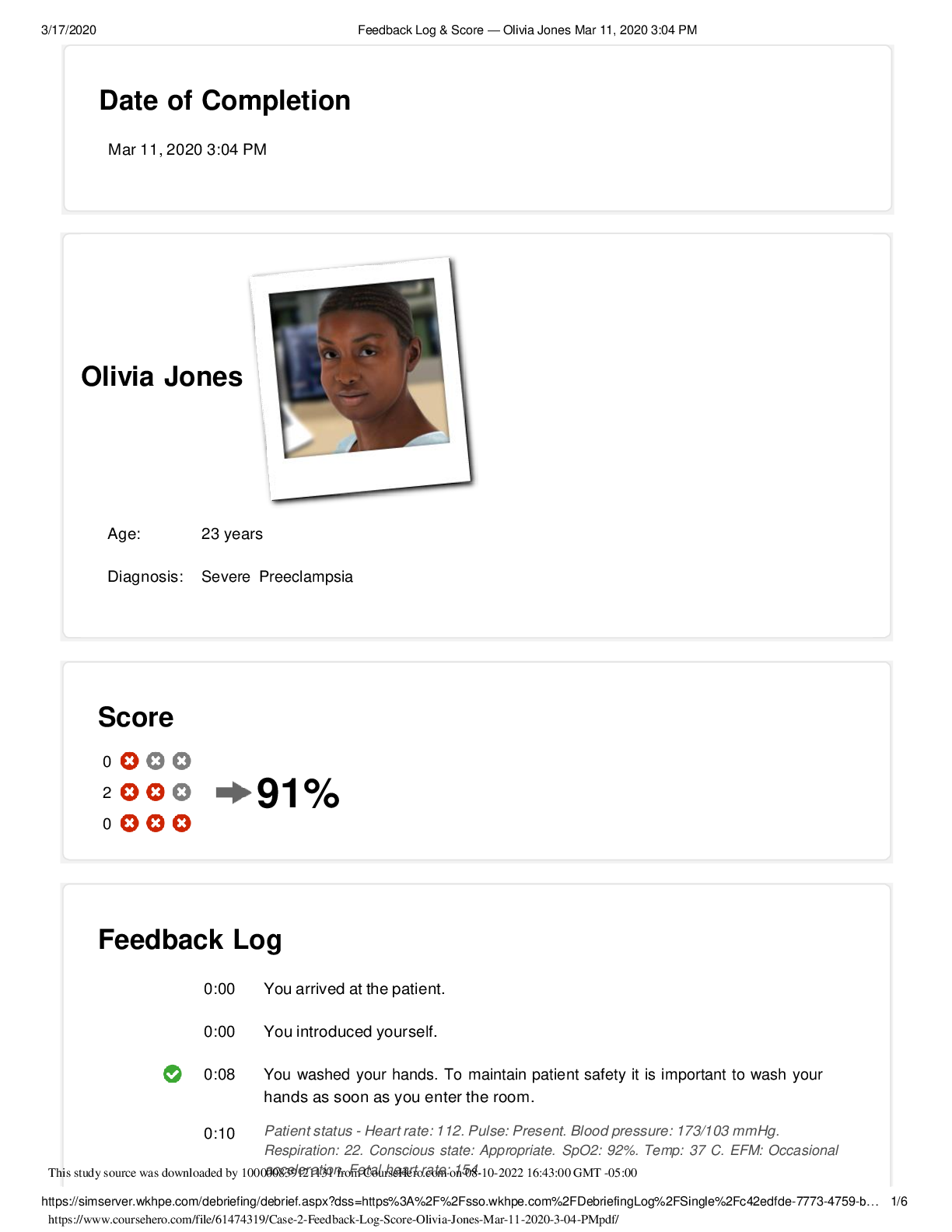
pdf (1).png)
.png)
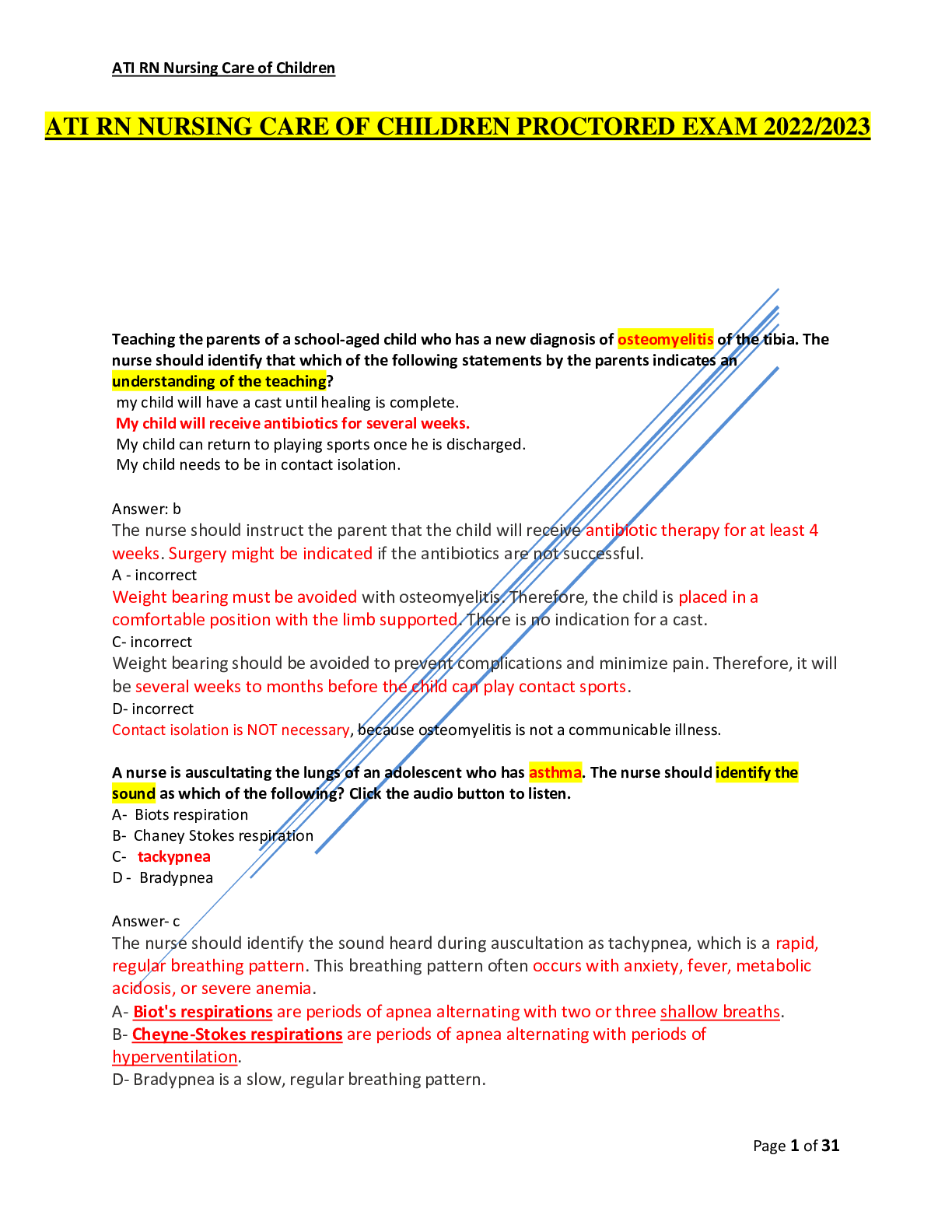
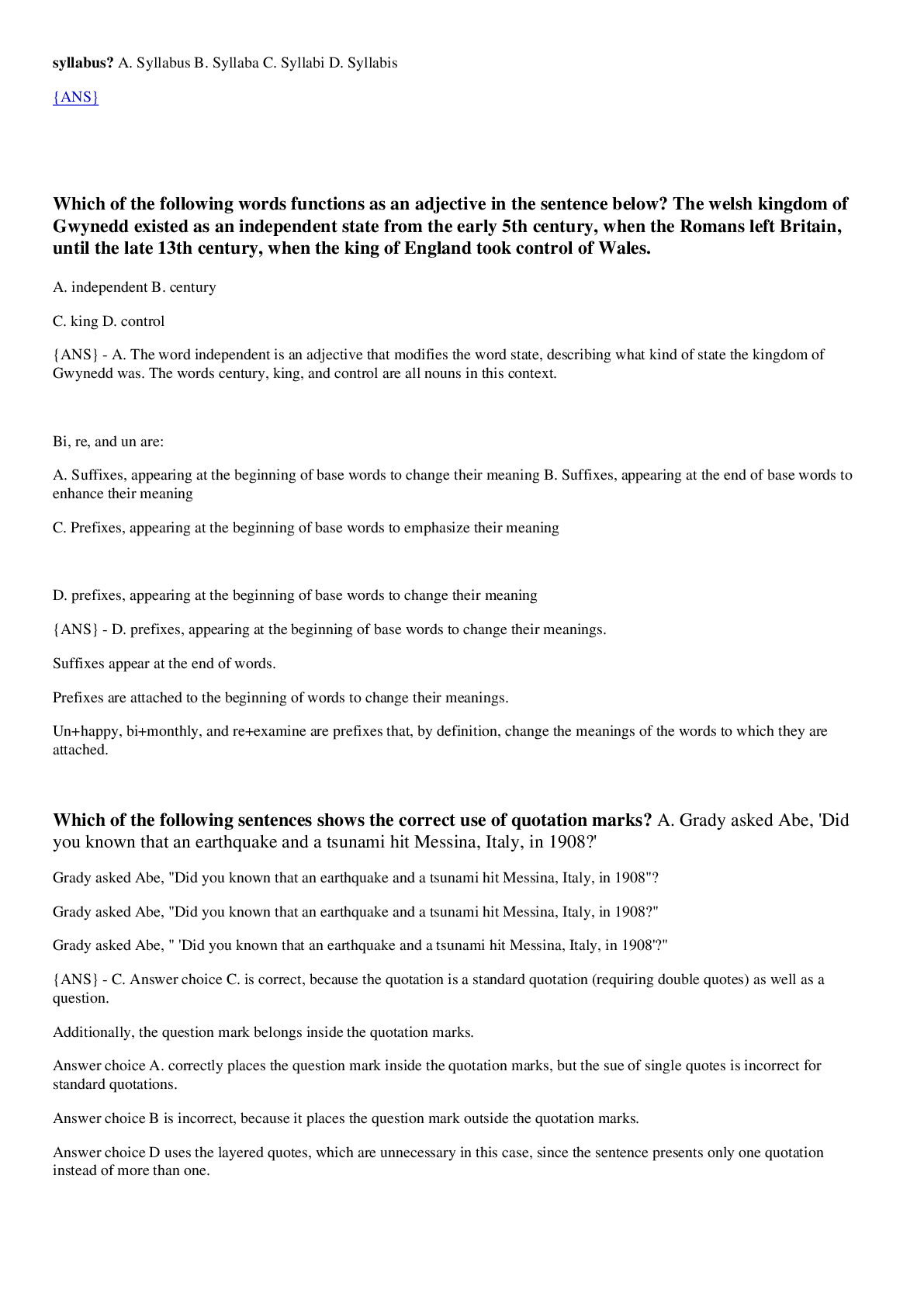
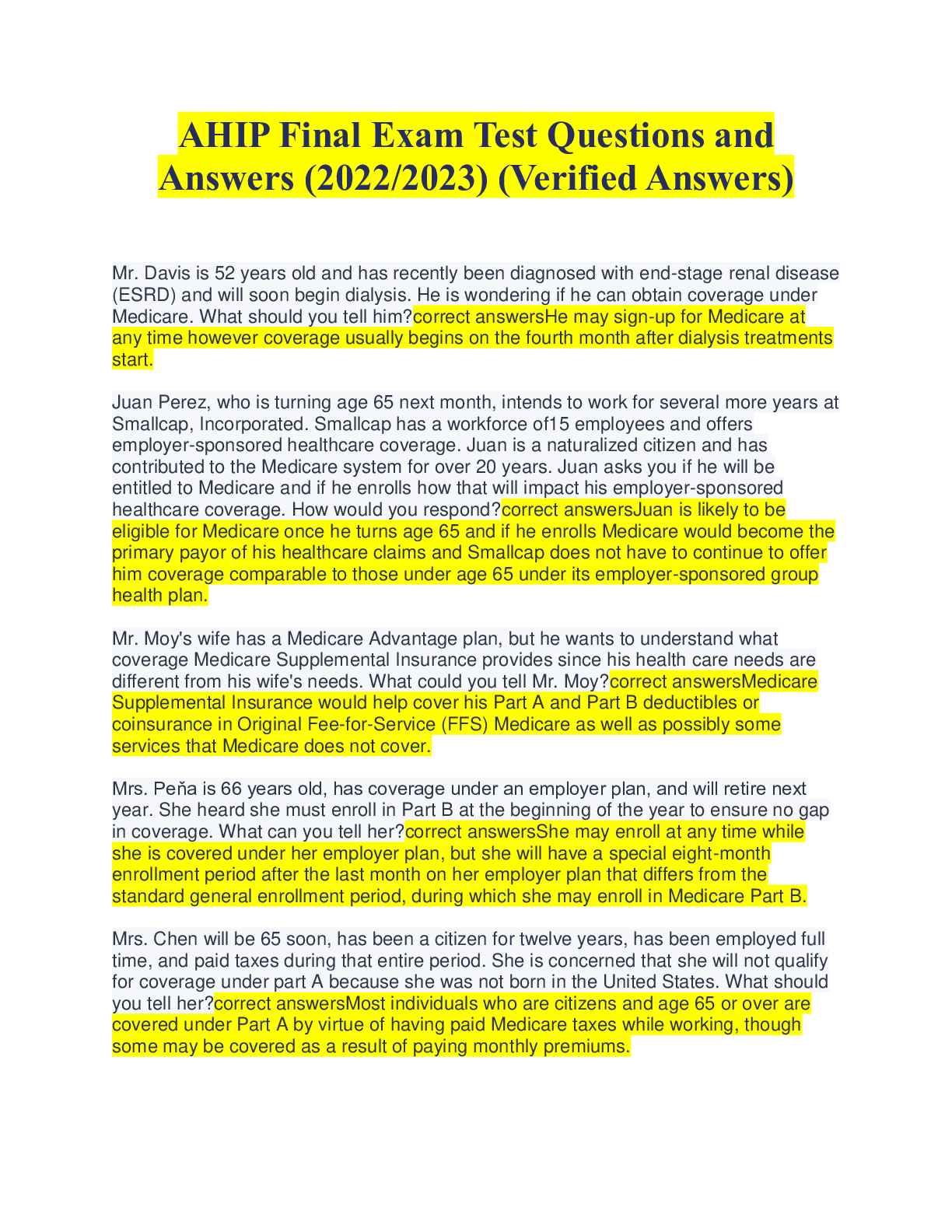
 (1).png)
